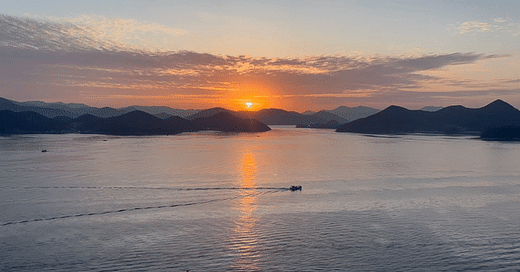“Positano!” The word paints a scene of cerulean waves lapping against a cliff specked with colorful houses.
To be honest, I’ve never been. Yet, I know that Positano is synonymous with the beach. Just hearing the city’s name evokes images of straw hats, skin shiny with sunscreen, candlelit dinners by the sea.
As such, Positano is “Italy’s go-to beach city”. The clarity with which Positano’s essence can be defined is beneficial for both locals and tourists. Those on home ground know exactly what the city ought to be serving. Those visiting have a clear idea of what to expect even before stepping foot onto the Amalfi coast.
I call this simplicity in understanding the rule of one. As the name axiomatically suggests, this rule is predicated on the notion that people comprehend things one at a time.
the rule of one…is predicated on the notion that people comprehend things one at a time
It’s not by chance that Dieter Rams, Braun’s star designer, espouses the mantra: less but better. This minimalistic way of approaching and processing the world predates and is echoed by Steve Job’s observation that “simplicity is the ultimate sophistication”. What both luminaries are driving at is the indisputable truth that humans—for all our cerebral complexity and depth—like things easy.
While there’s certainly merit to contemplating and doubling down on a conundrum, in most cases, people are drawn to stuff that is easily registered. This is why catchphrases, slogans, mottos are squeezed out from the souls of tortured copywriters designed to be simple. The Easy is what sticks.
The Easy is what sticks.
I came to this realization firsthand during a recent trip to Tongyeong (통영), a port city about a two hours drive from Busan. It was my first time visiting but I’d been primed enough by TV beforehand to know that Tongyeong is the city of seafood. So during the four hour bus ride to Tongyeong I was quite literally swimming in mouth watering visions of raw fish (회), oysters, and shrimp.
In a way, Tongyeong’s image is primordial in comparison to that of Busan’s; the latter is associated with omakase, light shows, summer parties and trendy cafes whereas the former promises a retreat into nature’s quiet folds. I certainly took in my share of Tongyeong’s breathtaking natural beauty when I woke up in time to see the sun rise above purple ridges stretched out across the sea. This ethereal, early morning moment has stuck with me. Now, when I think of Tongyeong this scene replays, further engraining the city’s bucolic mystique into my mind.
What sticks is what’s memorable. Sometimes stickiness emanates from a natural source like Tongyeong. Nature’s sublimity is hard to experience but even harder to forget. Other times, stickiness needs to be designed in an easily understood form. We remember what we register. The bottom line is that stickiness forms the basis of differentiation and eventually, the essence of a brand.
Stickiness is branding—let’s hope this truth sticks with you.




![[video-to-gif output image] [video-to-gif output image]](https://substackcdn.com/image/fetch/$s_!GUEk!,w_1456,c_limit,f_auto,q_auto:good,fl_lossy/https%3A%2F%2Fsubstack-post-media.s3.amazonaws.com%2Fpublic%2Fimages%2F28ae81e3-d3f3-446b-a396-16ad8ecde068_600x338.gif)